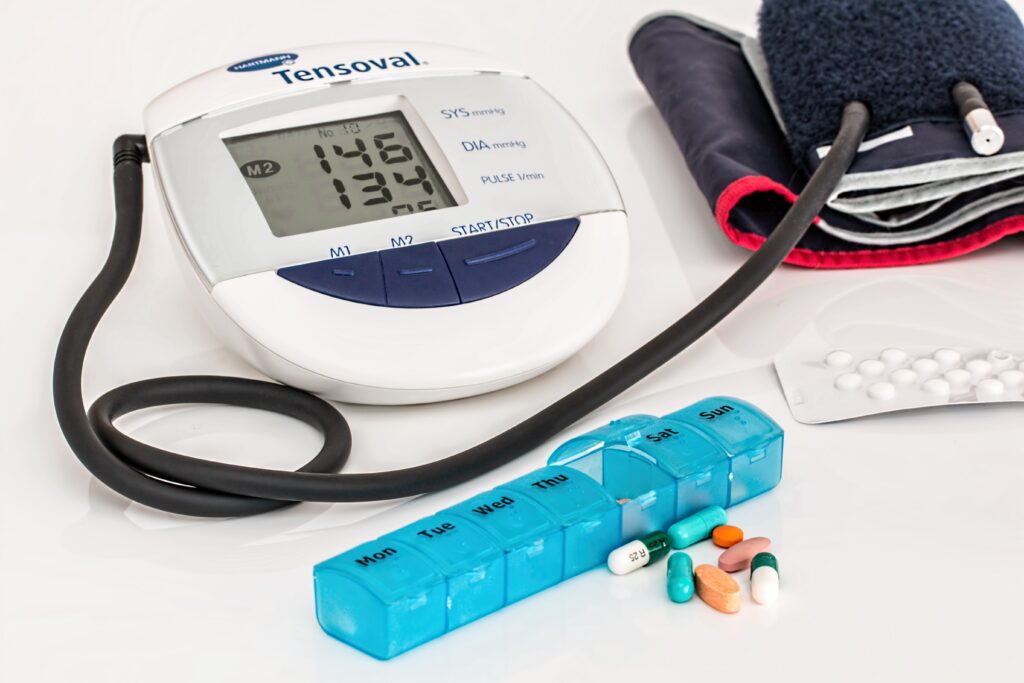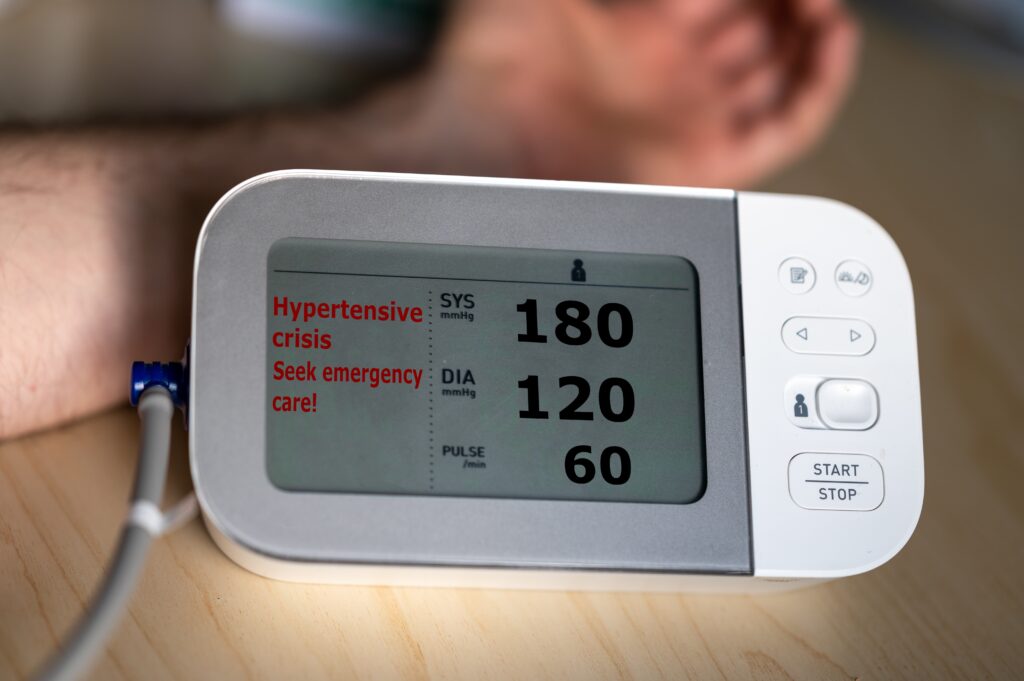How Common is Hypertension in the US?

How Common is Hypertension in the US: Hypertension, or high blood pressure, is a major public health concern that affects millions of people in the United States. In this article, we’ll examine how common high blood pressure is in the US, what causes it, and how it affects public health.
Understanding Hypertension:

When arterial blood pressure remains consistently high, a medical condition called hypertension develops. Systolic pressure, which measures the pressure when the heart contracts, and diastolic pressure, which measures the pressure when the heart relaxes between beats, are the two parts that make up blood pressure, measured in millimeters of mercury (mm Hg). goes.
The normal range of blood pressure is 120/80 mm Hg. On the other hand, hypertension develops when blood pressure continuously rises above the normal range. People with high blood pressure may not notice any symptoms until the problem develops; It is important to keep this in mind as the condition is often asymptomatic.
Blood pressure can be classified into two primary forms:
1 Primary (Essential) Hypertension:
The most prevalent form of high blood pressure, it increases slowly over time and has no obvious origin. Environmental factors (such as stress) and lifestyle choices (such as diet and exercise) are also important contributors.
2 Secondary Hypertension:
The most prevalent form of high blood pressure, it increases slowly over time and has no obvious origin. Environmental factors (such as stress) and lifestyle choices (such as diet and exercise) are also important contributors.
Possible causes of high blood pressure include:
- Hypertension is increasingly common as people get older because their blood vessels become less elastic and flexible.
- High blood pressure runs in families, increasing the risk for people who already have it.
- Statistically, people of African American descent and other racial and ethnic minorities have a higher risk of having high blood pressure.
- High-sodium diets, inactivity, excessive alcohol use, and smoking are all examples of unhealthy lifestyle choices that can increase the risk of high blood pressure.
- When people are overweight or obese, their heart works harder and they are more likely to develop high blood pressure.
Untreated high blood pressure can lead to serious complications such as heart disease, stroke, kidney damage, blindness and cognitive decline. High blood pressure requires early detection and care to prevent long-term consequences and maintain general health.
Changes in one’s lifestyle and, in rare cases, medication are the mainstay of treatment for high blood pressure. Some examples of lifestyle changes include eating better (for example, the DASH diet), getting more exercise, reducing salt, drinking less alcohol, not smoking, and learning to deal with stress.
Treatment of hypertension may involve the use of several medications, including beta-blockers, angiotensin II receptor blockers (ARBs), calcium channel blockers, ACE inhibitors, diuretics, or a combination of these.
The keys to successfully controlling high blood pressure and reducing the risk of related consequences are regular blood pressure monitoring, regular medical checkups, and open communication with health care experts. People can take responsibility for their heart health and well-being by learning about high blood pressure and its causes, risk factors, and management techniques.
Prevalence Data:

A large percentage of Americans suffer from high blood pressure, making it one of the most common health problems in the country. Rates of hypertension vary with age, gender, ethnicity, and socioeconomic status, as well as other demographic variables. To address this increasing health risk, it is essential to understand these prevalence numbers to establish targeted interventions and public health activities.
According to CDC data, about one-third of Americans have high blood pressure. As a result, millions of people are struggling with high blood pressure on a daily basis, which puts them at risk for many health problems, including heart disease.
The incidence of hypertension is greatly influenced by the age of the patient. The risk of high blood pressure increases with age. According to the CDC, the prevalence of high blood pressure is estimated to be nearly two-thirds among individuals over the age of 60. Nonetheless, hypertension is not age-specific; It can attack at any time, even young people.
There are also disparities in the prevalence of hypertension by gender. Historically, high blood pressure has been more common in men than women. Nevertheless, the disparity between the sexes decreases as people age; High blood pressure is more common in women than men after the age of 65.
The frequency of hypertension varies between racial and ethnic groups. The prevalence of hypertension is highest among non-Hispanic black individuals compared to all racial and ethnic groups in the United States. Compared to adults who do not identify as Hispanic, the risk of high blood pressure is approximately 50% higher. The prevalence of hypertension is lowest among non-Hispanic Asian adults and highest among Hispanic adults compared to non-Hispanic white adults.
The prevalence of hypertension is strongly influenced by socio-economic factors, including income level and access to health care. High blood pressure is more common in people of lower socioeconomic status for several reasons, including greater stress, less access to treatment, and poor lifestyle choices.
Given the high incidence of hypertension in the US, public health initiatives aimed at increasing awareness, promoting early diagnosis and treatment, and addressing underlying risk factors should be prioritized. By studying demographic trends and disparities in the prevalence of hypertension, health care practitioners and policy makers can develop targeted interventions to enhance cardiovascular health outcomes and reduce the burden of hypertension on individuals and communities.
Age and Gender:

The fact that the prevalence of hypertension varies between genders and age is indicative of the complex interaction of social, behavioral, and biological factors that influence hypertension levels.
High blood pressure is more common in older people, which suggests that age is a major risk factor. According to the CDC, nearly two-thirds of the 60+ population in the US have high blood pressure. The risk of high blood pressure increases with age because both blood pressure and vasoconstriction in the arteries reduce blood vessel symptoms. Despite this, hypertension is not limited to; Sometimes it can attack the younger generation also.
There are also differences in the prevalence of hypertension based on gender. Hypertension is always more prevalent among men than women among artists of all age groups. Society, the prevalence of hypertension decreases with increasing age between the sexes. After the age of 65, hypertension is more common in women than in men. Estrogen is thought to reduce dancing in menopausal women, which suggests that dietary and other biological factors may play a role in these gender differences.
There may be differences in higher constellations between the sexes due to changes in sex and differences in health. Behavioral risk factors for high blood pressure, such as smoking and heavy alcohol consumption, are more common in men. Women, on the other hand, may be more predisposed to stress-related hypertension and have a greater incidence overall. Gender differences in the prevalence of hypertension may be influenced by socioeconomic status such as socioeconomic status and health care access.
To make efforts to prevent and manage hypertension more effective, gender and age stability of its prevalence is of importance. By analyzing patient risk profiles, healthcare providers can better personalize planning and treatment plans. It is possible to reduce the impact of hypertension on both sexes through public health programs that recognize health outcomes and reduce modifiable risk factors. Improved cardiovascular health problems and reduced disability and hypertension-related mortality and morbidity can be achieved if health care systems address hypertension in a gender- and age-appropriate manner.
Racial Disparities:
In the US, high blood pressure is more common in many racial and ethnic groups, according to research. Individuals of non-Hispanic black origin are more likely to suffer from hypertension than individuals of Hispanic, white, or Asian origin. Eliminating these disparities requires equitable access to resources and health care programs that are sensitive to different cultures.
Table of Contents
Socioeconomic Factors:

There is an association between socioeconomic level and the prevalence of hypertension. Due to a variety of factors, including stress, poor diet, and inadequate health care access, people with low incomes and fewer health care options may be more vulnerable. Hypertension disproportionately affects vulnerable populations; Reducing this burden requires action to reduce socioeconomic inequalities.
Impact on Public Health:
High blood pressure is a major public health concern because it is common. This leads to rising health care costs and the prevalence of cardiovascular disorders. Promoting healthy lifestyle behaviors and increasing access to health care are important as population-wide interventions to reduce the societal burden of hypertension.
Conclusion:
How Common is Hypertension in the US: In fact, some people in America suffer from high blood pressure, which is quite prevalent. If we have a better understanding of its frequency and take into account factors such as gender, race, age and socioeconomic status, we can create more effective methods of prevention and control. If we come together we can reduce the impact of high blood pressure on people’s health and general well-being.
